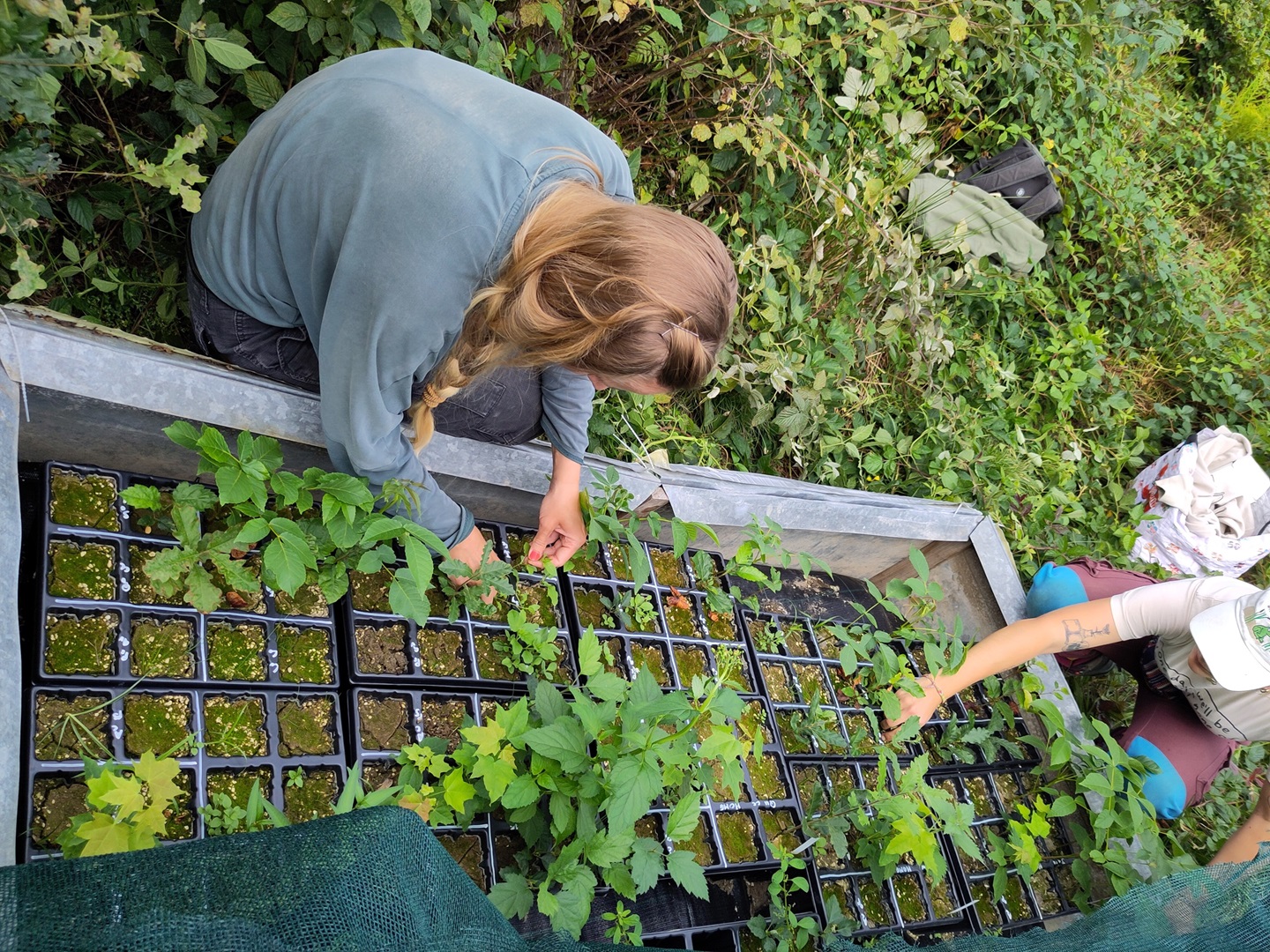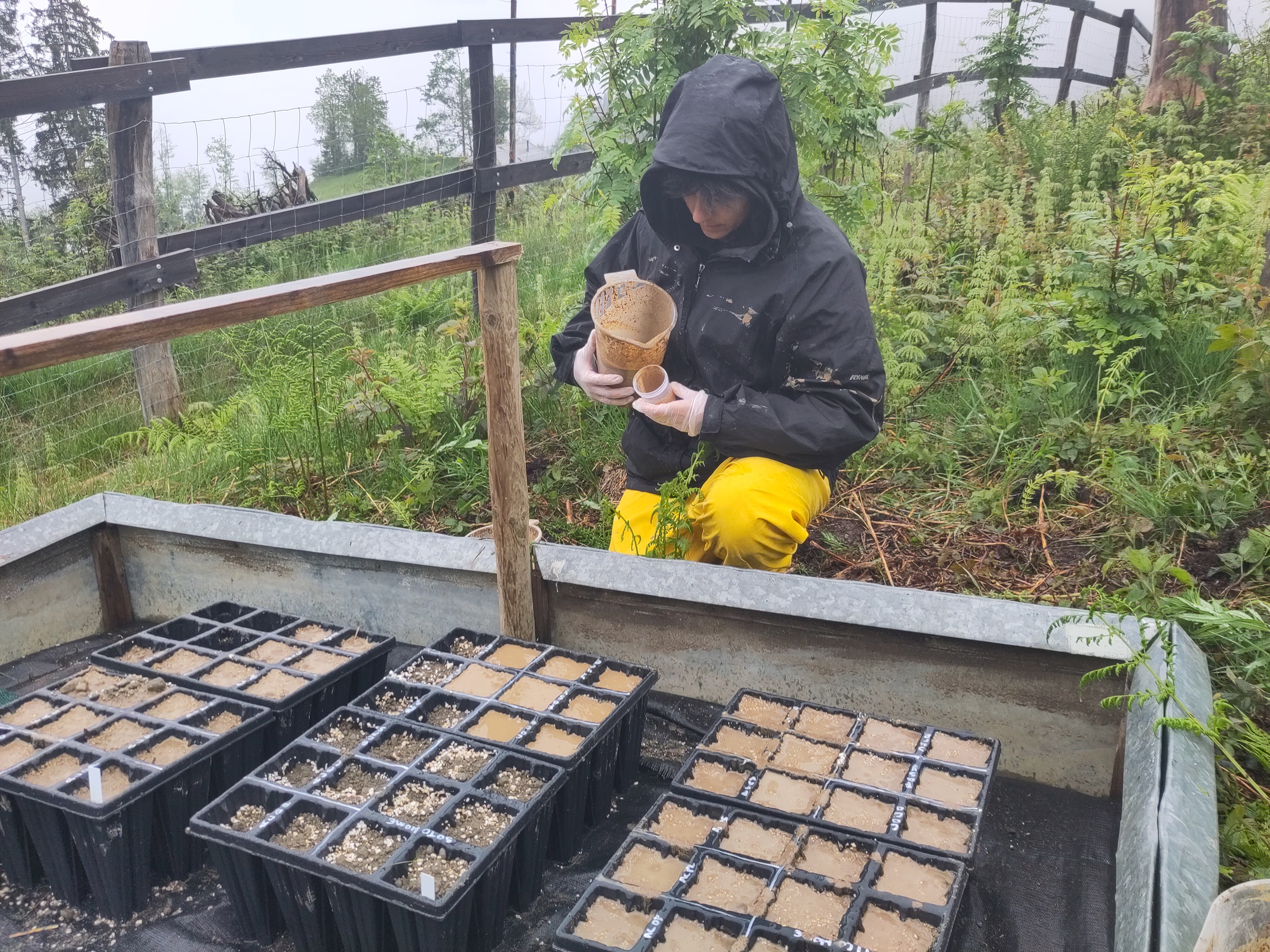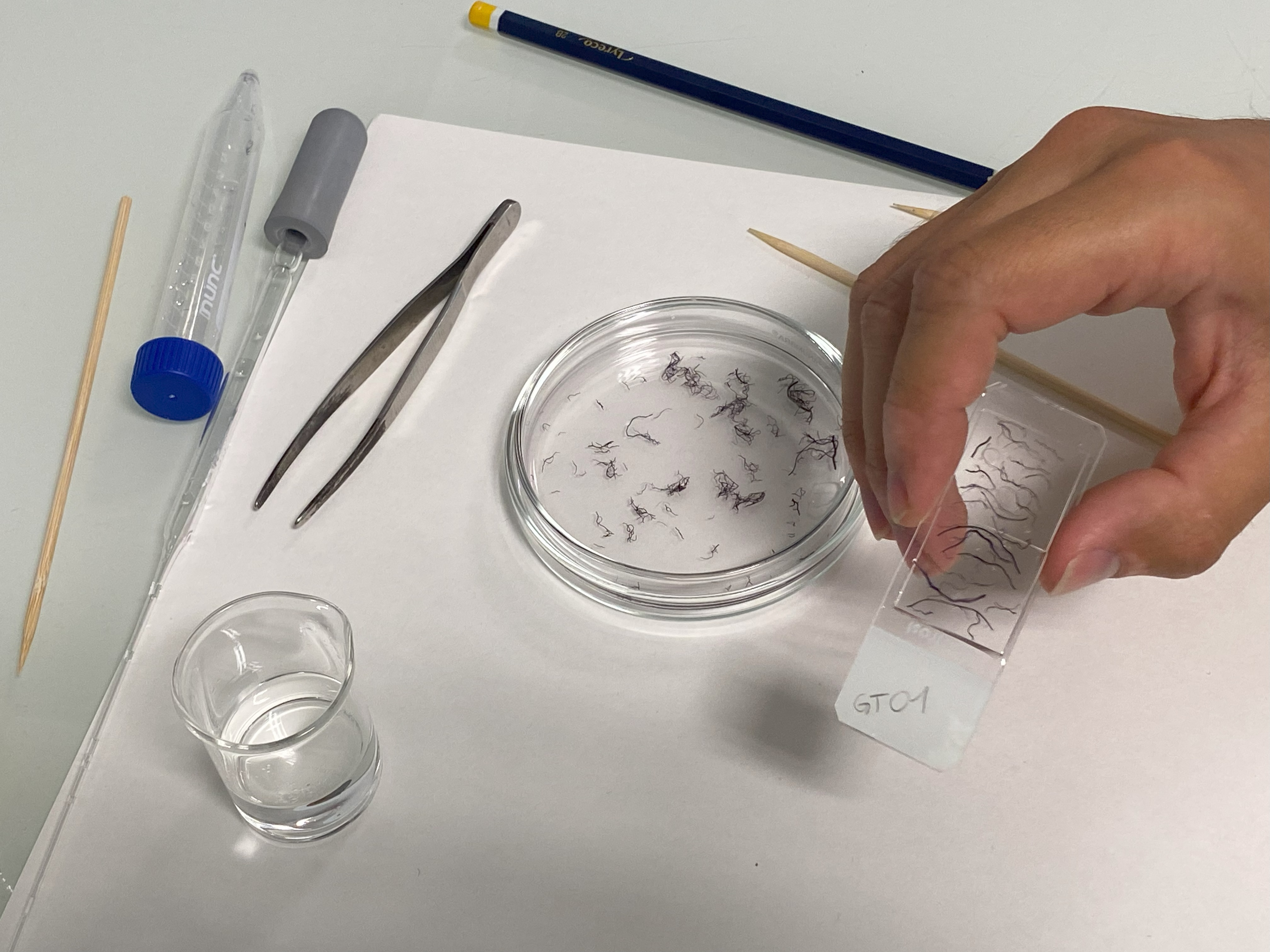Root Trait Strategies
Can root traits predict plant soil feedbacks?
Recent advances suggest that belowground plant strategies can be linked to soil community components, helping to predict the outcome of plant-soil feedbacks.We investigate how plants with different root strategies affect the diversity of mycorrhiza and pathogens in the soil, and how this in turn affects the recruitment success of these and other species.
Root economics space
The conservation axis links to pathogenic effects and fast species with a higher root nitrogen and a lower root tissue density, should accumulate more pathogens in their soils. The collaboration axis, on the other hand, is determined by the specific root length and root diameter. Plants either take up nutrients by themselves or outsource the uptake to mycorrhizal fungi, resulting in species with a large diameter to accumulate more mutualists in their soils.
Multi-site experiments
We established a multi-site experiment with twelve angiosperm tree species ranging root trait strategy and mycorrhizal type. The results of this project can be used in adaptive forest management as a complement to natural regeneration methods, which primarily control light availability in the forest to roughly control tree species composition

Methods & Approach

Exprimental inoculations
To isolate PSFs of tree species with different functional root strategies and associating with different mycorrhizal types, we collected soil under planted angiosperm trees in multiple research gardens in Switzerland. Other studies have assessed the species-specific effects of trees on their soil communities, but they have rarely used planted species. The advantage of using planted species in research gardens is that the pre-planting biotic and abiotic environment is the same at each site and hence does not covary with tree species, which allows us to rule out alternative explanations for soil community structure. Moreover, air and soil temperature, precipitation, and soil moister are continuously measured and soil properties have been measured before planting providing extensive background information and local and precise climate variables.

Root strategies & Fungal communities
To test whether the two-dimensional root space can help predict the outcome of plant soil feedbacks we will measure the root traits of 10 individuals per species. We will carfully clean and scan the root to obtain specific root length, root diameter and root tissue density and we will used dried samples to assess root nitrogen contents in the lab. In addtion, we will assess mycorrhizal collonisation rates on fresh root samples using a microscope and characterize mycorrhizal and pathogenic soil community components using next generation sequencing.